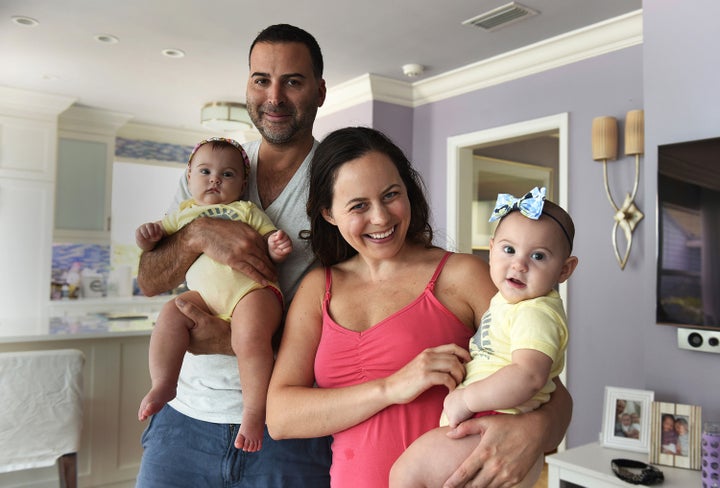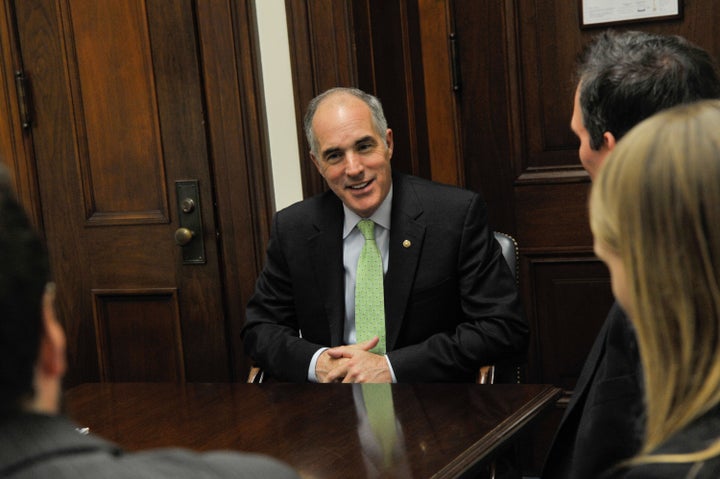
Child care is more expensive than public college tuition in most U.S. states making it unaffordable for the majority of middle-class families, let alone those living in poverty.
Now, some lawmakers are trying to change that.
Congressional Democrats announced a new bill on Thursday that aims to increase access to child care for lower-income families and improve the notoriously inconsistent quality of the child care those subsidies buy.
The Child Care Access to Resources for Early-learning (CARE) Act, which has the backing of the White House, allocates an additional $25 billion in mandatory funding over five years to the Child-Care Development Block Grant, a federal subsidy for state-run child care assistance programs.
While the block grant itself serves low-income children under age 13, the new funds would be designated for children under age four only, since the first few years of a child’s life are believed to be the most critical years for cognitive development.
States’ eligibility for the new funding would depend on their adoption of new quality improvement metrics. And as under current law, states would be required to match a portion of the federal funds with contributions of their own.
Sen. Bob Casey (D-Pa.), and Reps. Joseph Crowley (D-N.Y.) and Lois Frankel (D-Fla.), who are sponsoring the bill in the Senate and the House, respectively, framed the bill as both a lifeline to working parents struggling with the costs of care, and a boon to the American economy.
“If we are going to be not only competitive but outcompete the world, we need the best workforce in the world,” Casey said at a rollout event for the legislation in the Senate on Thursday. “One of the best ways to ensure that is to make sure that every child has an opportunity, and especially that children from low-income families, have an opportunity to learn more now and earn more later."

The bill would generate new funds by closing a loophole U.S. companies use to base themselves in a foreign country to avoid shouldering a domestic tax burden -- a practice known as “tax inversion.”
The new funding infusion is aimed at bringing the program closer to achieving its stated goal of providing access to subsidized child care for the infants and toddlers of families who live in or near poverty.
The Child-Care Development Block Grant program, which dates to 1996, was reauthorized in 2014 with virtually no opposition.
But the program’s funding levels lag far below what is needed to provide that care to all eligible children.
Over 7.4 million children under age four live at or below 200 percent of the federal poverty level, or $48,600 for a family of four, but millions don't have access to subsidized child care -- just 583,773 receive the development block grant subsidies, according to the Department of Health and Human Services’ office of child care.
The legislation is projected to provide child care to one million more children over the course of ten years, according to a summary and description of the bill distributed by its congressional sponsors.
There can be little dispute that the U.S. child care system is substandard. Only 10 percent of day care providers offered high-quality care, according to a 2007 government study.
So, to accomplish the tricky task of increasing access to care and simultaneously improving the already-poor quality of care, the legislation would require states to adopt significant new quality controls to qualify for the new funding.
States would not only have to affirm that they are committed to expanding their eligibility standards significantly, to include more children by 2021, to receive the funds, but also submit a plan to the federal government that describes how they plan to improve the quality of child care.
Specifically, the bill asks states to create a payment formula for child care providers adequate enough to create a child development and learning environment similar to what is offered by Head Start and Early Head Start, federal programs considered by many advocates to be the gold standard for children under age four. It also requires states to pay child care workers enough to obtain “credentials or degrees and the knowledge and competencies to support children’s learning,” according to the bill summary.
At least 80 percent of the new funding would be designated for paying for the services directly and a minimum of 12 percent -- up from the 9 percent quality improvement ratio required by the 2014 reauthorization of the broader Child-Care Development Block Grant -- of the new funding would be earmarked for quality improvements such as pay increases and technical training for child care professionals.
The new provisions build on the minimal quality controls established by the 2014 reauthorization bill, such as the first ever requirement that child care provider staff who receive subsidies for looking after low-income children undergo criminal background checks.
The bill’s congressional sponsors say that the funding increase is in itself a key component of the quality improvement plan -- they argue that the child care industry’s low pay is a major impediment to high-quality care.
The median pay for child care workers is $10.31 an hour, which is relatively low compared to other workers who typically earn $17 an hour.
As a result, child care workers are more than twice as likely as other American workers to be living in poverty.
“We pay people who fix toilets … more than the people who take care of the most precious part of our lives,” Rep. Frankel said at the Thursday rollout event.
The Democratic lawmakers acknowledged that the bill is unlikely to pass the Republican-controlled Senate or House.
Sen. Casey seemed to doubt that the bill would attract Republican support, but said he holds out hope that GOP colleagues will co-sponsor it when he formally introduces it next week.
“I am an optimistic person,” Casey deadpanned.
“We pay people who fix toilets … more than the people who take care of the most precious part of our lives.”
- Rep. Lois Frankel (D-Fla.)
Child welfare advocates, many of them in attendance at Thursday’s announcement, applauded the new bill as a crucial step toward making high-quality, affordable child care universally available.
“We’re really feeling very positive about it,” said Patricia Cole, director of government relations at Zero To Three, a nonprofit dedicated to improving the wellbeing of infants and toddlers. “This is a sign that the president and Congress are listening to the science of brain development that babies need to be surrounded by quality child care.”
“It's an aspirational bill that hopefully will start a much-needed conversation between the federal government and the states about how to finance a system that ensures young children's development is supported while their parents are working,” Cole added.
Chris Herbst, a public policy professor at Arizona State University, whose research has focused on U.S. child care outcomes, is skeptical that the new quality requirements are dramatic or binding enough to make much of an impact.
Among the proposals Herbst would prefer is the one put forward by the Center for American Progress, in which the federal government provides generous tax breaks to families if they purchase child care from providers the government recognizes as offering high-quality care.
“If they’re serious about increasing not just access, but access to high quality care, why not build explicit incentives into the program to purchase higher quality care at the consumer level?” he asked.
Also on HuffPost:

